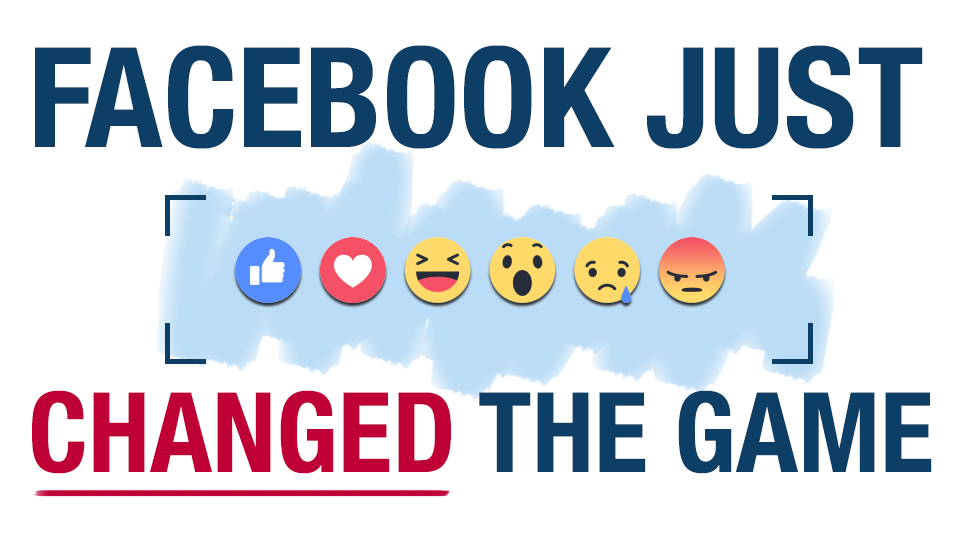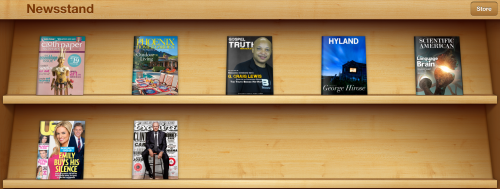 As you doubtless already know, Facebook just rolled out its ‘reaction’ emoticons to all users globally. Now instead of simply ‘liking’ an article or other post on Facebook, it’s possible to use that ‘like’ to indicate one of several feelings you may have related to the post. The new ‘reactions’ are: Love, Haha, Wow, Sad and Angry. So the next time a celebrity dies and that story spreads over the social network – you’ll be able to show you are sad about the news rather than fumbling around wondering whether you should ‘like’ the post or not.
As you doubtless already know, Facebook just rolled out its ‘reaction’ emoticons to all users globally. Now instead of simply ‘liking’ an article or other post on Facebook, it’s possible to use that ‘like’ to indicate one of several feelings you may have related to the post. The new ‘reactions’ are: Love, Haha, Wow, Sad and Angry. So the next time a celebrity dies and that story spreads over the social network – you’ll be able to show you are sad about the news rather than fumbling around wondering whether you should ‘like’ the post or not.
In the past, with only ‘like, comment and share’ as the visible engagement options, users would have to decide – do I ‘like’ this news that I don’t actually like? Commenting is popular but the barrier to tapping out even a quick sad smiley face as opposed to clicking or pressing one button is much higher and a lot less people engage in this way. Publishers would adapt to this dilemma in several ways. Equating likes to another feeling was fairly common, especially amongst viral pages. When Robin Williams passed away, a slew of “Like if you miss him.” type posts showed up across Facebook. When the most popular hockey player in Finland (Teemu Selanne) retired, a single post went super-viral which simply said “Thanks Teemu.”
We have seen other publisher strategies such as ‘like catchers’, lightweight posts that may not even be news stories, for example a photo of a sunrise and “Good morning readers!” as the caption. These posts serve to tell Facebook’s newsfeed algorithm ‘Hey, I’m here and this page is something people like to engage with.” which has a knock on effect on other content posted by that page. This works, but the macro effect is that feel-good or ‘easy to like’ content tends to dominate on Facebook. (That and ‘panic posts’ which people feel compelled to share about some oft-made up imminent terror).
More than a like
Publishers have had to wrestle somewhat awkwardly with how to present their news articles on Facebook to encourage the engagement that is available on Facebook. Why do they bother doing this – isn’t it just viral pages that do this? In short no, every top 20 publisher in each country around the world chases FB engagement to some degree, because engagement means reach, reach means traffic and traffic means money. Facebook is so significant a source of traffic for media publishers that ‘playing the game’ and engineering stories to be appealing on Facebook to gather engagement has long been the norm. (Though of course many publishers are still playing catchup in this regard.)
With the new reactions system; Facebook has changed the rules of the game for publishers.
Articles from the leading digital publishers will quickly begin to align themselves with one of the different reactions available. “Is this a ‘Wow’ story?” “Does this make people feel sad or angry?” These questions will become an innate part of constructing and presenting stories for consumption via Facebook. In practice it’s not quite as clear cut as that for all but the most
For those involved in looking at data coming out of social networks, it’s an interesting change (albeit one that no one outside Facebook can currently track, yet). This change by Facebook means it will be possible to see interaction and engagement as sentiment. Imagine for a publisher knowing that February was your saddest year, or that last week you got more ‘Wow’s than any other day of the month, or seeing a stronger correlation between clicks and ‘”Angry” articles than others. By recording these things you will be able to see what the current balance of news is in terms of how people feel about it. “Are we posting mainly happy stories, or are we worrying our readers too much?” Indeed, this will be important at some point, as Facebook begins to decide how it should weight each reaction. Here’s their official line on it right now:
“Our goal with News Feed is to show you the stories that matter most to you. Initially, just as we do when someone likes a post, if someone uses a Reaction, we will infer they want to see more of that type of post. In the beginning, it won’t matter if someone likes, “wows” or “sads” a post — we will initially use any Reaction similar to a Like to infer that you want to see more of that type of content. Over time we hope to learn how the different Reactions should be weighted differently by News Feed to do a better job of showing everyone the stories they most want to see.”
So while all reactions are equal right now, expect Facebook to start weighting the different reactions on a per user basis as time goes on. If it’s a bad news day, a feelgood story might do better, and so on.

